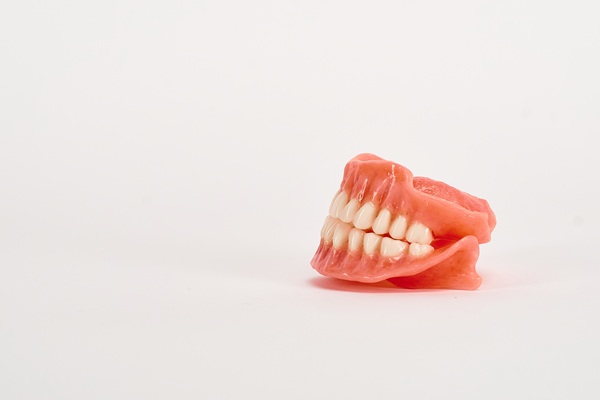Dental Crowns to Restore a Tooth’s Shape and Size

Having dental crowns can change the way your mouth looks. Any distortion in the size and shape of your teeth can disappear with the help of caps. Crowns are custom-fit restorations capable of restoring and protecting your teeth. If you want to know how dental crowns can bring back your tooth’s size and shape, here are the details.
Recommending dental crowns
A dentist can recommend many restorative options. Caps come into mind right away because of their ability to improve the form and function of teeth. These dental restorations come in porcelain and ceramic. Some dentists choose to use porcelain-fused-to-metal caps. Crowns can help remove any deterioration in the tooth’s size and shape. These prosthetics can strengthen and protect the affected teeth from future injuries.
Types of dental crowns
A patient can choose among the different types of crowns available. The dentist can recommend the right type, depending on the patient’s case. The type of crown also depends on the location of the affected tooth. The patient’s budget is also a common consideration. Here are the common types of caps available:
·Pure porcelain crowns
These caps provide patients with the most natural-looking results. Porcelain blends well with the neighboring teeth.
·Gold crowns
These caps are a combination of metals like chromium, nickel, and copper. The combination of metals gives the yellow or gold color. Gold crowns are durable, but the color attracts too much attention. That is why dentists often use them for back teeth.
·Lithium disilicate crowns
These caps are thin and light. They are ceramic with lithium disilicate.
·Zirconia crowns
Each of these caps combines the good looks of porcelain with the strength of the metal. Layered zirconia and translucent zirconia are becoming more popular. These are lasting restorations with a low possibility of breaking and chipping.
·PFM (porcelain fused to metal)
These are common options for crowns. These provide strength and good aesthetics.
Fulfilling the patient’s preferences and needs
Dental damage tends to weaken teeth. Factures, chips, and cracks compromise the enamel. The point of damage will be the entry point for bacteria. The dental crowns will seal the vulnerable points and stabilize the tooth.
Teeth with large fillings have very little natural tooth structure left. These teeth need crowns for additional support. Stained and discolored teeth can have dental caps as an alternative to professional teeth whitening. Porcelain crowns are stain-resistant. The dentist will then choose the right shade of white the patient prefers.
Addressing the shape and size issues
Talking to the dentist about the ideal way to restore the shape and size of teeth is always the first step. Teeth with strange angles or worn surfaces can have dental crowns as restorations. The dentist will perform a physical inspection of the affected teeth. Panoramic X-rays are also important. The dentist will then make dental impressions of the teeth. The dental lab will use these impressions to create custom-fit crowns with the correct shape and size.
Preparing for and getting the dental crowns
The patient must go through some preparations before getting the caps. The dentist will grind down the remaining healthy dental structures. This will ensure the crowns’ comfortable fit. Taking impressions of the prepared teeth will guide the dental lab in creating the permanent porcelain dental crowns. The dentist will place temporary caps over the prepared teeth. This will protect the treated teeth while waiting for permanent dental crowns.
The patient will return to the clinic when the permanent crowns are ready. The dentist will check if the crowns fit well. There will be adjustments if the teeth need it. The dentist will cement the dental crown over the waiting teeth. A curing light will harden the cement and set the dental crowns in place. The patient’s new crowns will blend with the patient’s natural teeth.
Proper care
Dental crowns need extra attention. The natural tooth underneath the crown is still prone to infection. Food particles and plaque could still enter spaces between the crown and the natural tooth. Good oral care every day and routine dental visits can help dental crowns last for decades. Avoiding hard or chewy foods can prevent damage to the crowns.
Dental crowns can help you regain your stunning smile
Your malformed or damaged teeth can achieve the enhancement they deserve. Dental crowns can elevate your self-image. It can even improve your bite, chew, and smile. These restorations can remove the undesirable shape and size of your teeth. Your dentist can help prepare you for your coming dental crown placement procedure.
Are you considering getting dental crowns in the Peabody area? Get more information at https://www.northside-dentalcare.com.
Check out what others are saying about our dental services on Yelp: Dental Crowns in Peabody, MA.
Recent Posts
Dental crowns are often costly and require that a dentist remove a significant amount of the tooth's structure to place them. Read on to learn about dental crown alternatives. Other treatment alternatives are sometimes available that are either less expensive or significantly less invasive. Dental crowns are frequently used to restore severely damaged teeth.The following…
A dental crown can restore a damaged, worn, or weakened tooth. This restoration can bring back your healthy smile and stable dental function. Knowing the benefits of dental caps can motivate you to set an appointment soon. Here are the benefits of a dental crown that you must consider.Losing a tooth can be annoying, especially…
A dental crown is a way for a dentist to repair a broken or damaged tooth. This is a simple solution that many people elect because it is durable and looks like normal teeth. It is also a great option if you have only one tooth that is damaged.The crown is made to match your…
A dental crown is a type of dental restoration that covers a damaged or weakened tooth and improves its size, shape, health, and appearance. There are certain signs a dentist may look for to determine whether a dental crown is the best form of restoration for a patient or if another restoration may be more…


